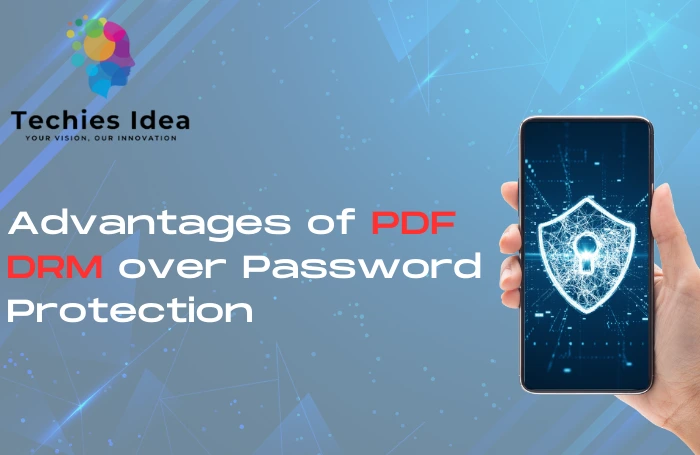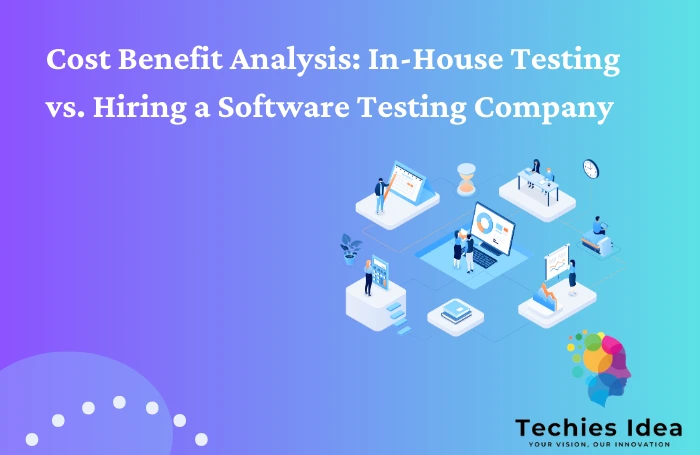Understanding PDF DRM and Password Protection
What is PDF DRM?
PDF DRM itself is an abbreviation for Digital Rights Management technologies that are meant to secure the access and use of digital documents, particularly PDFs. This technology enables to prevention of unauthorized access and misuse of the content by determining who is allowed to view, print out, or edit the files.
In a nutshell, PDF DRM does lock the document, and certain use rights are only restricted to certain individuals or groups. Unlike the above, it does not matter if the PDF is distributed what counts are the licenses users possess. This extra measure is useful in protecting proprietary information, confidential material, and intellectual property.
In addition, PDF DRM solutions most of the time come with tracking and reporting features, which allow the owners of the content to see how and where their documents are used. This is of particular importance to organizations that are under legal and regulatory compliance as it gives them a record of every interaction of the documents.
What is Password Protection?
As with any other security feature, password protection also is fairly simple to use as a constant password has to be provided before a PDF can be accessed. If done properly, this approach keeps trespassers out, provided that the password chosen is sufficiently complicated and not divulged indiscriminately.
Even though password protection can be a useful practice when carrying out tasks with sensitive information, its application is quite elementary. For example, it would not take much time for someone who has been given the password to a specific document to read it. There are also cases when users have opted to open secured files by entering several passwords only to discover that they cannot do so because the particular file had too many passwords.
To improve security, users are encouraged to follow best practices regarding the use of password management systems whereby the chances of oversight of security events occurring are eliminated. Some PDF-related software does give the option of setting up a policy on the expiration of certain passwords which would make the users change their passwords within due time as it is done in most organizations.
The Limitations of Password Protection
Security Concerns with Password Protection
The protection of information using passwords has one serious limitation- the effective threat that can be posed. Attackers can crack passwords through brute force methods. The exception is weak passwords. Once they bypass this barrier, the complete document becomes accessible without any restriction.
If on the other hand, a document is forwarded without protecting the password, there will be no control over who can see or edit the document at all. Such a situation can result in unauthorized changes and dissemination of some important information risking the protection of intellectual and personal privacy.
In addition to brute force attacks, phishing schemes can seek to deceive users into revealing their passwords for reasons that bear risks on password-protected documents. Another scheme also used by cybercriminals when performing these actions is social engineering, where the personnel is simply as knowledgeable as access is gained. So not only are strong passwords important but the users also have to be educated and trained as well.
User Accessibility Issues
Password protection can also present problems in the accessibility of information. There are some situations in which once a user forgets the password, it may take so long to find ways of accessing the document and require so much, which includes software and support from other people.
Also, it is understandable that organizations that have to deal with many PDF files may find the use of such a feature pointless. This will lead to anger, loss of efficiency, and in the end, a higher probability of security problems as users turn to poor solutions to beat these challenges. Especially in such situations, where people are likely to be sharing the same documents within a project, due to having multiple contributors to the project.
Passwords often get in the way and hold up the flow of work, which then tempts employees to distribute passwords inappropriately, or the employees are made to wait to deliver time-sensitive critical information. Every organization’s operational procedures cause tension which calls for a need to avoid password-based protections and other forms of document protection more clearly.
The Strengths of PDF DRM
Enhanced Security Features
Password protection techniques have been beaten immensely in many regards when including PDF DRM. Basic password-based protection does not allow for the use of encryption methods to protect the data. It prevents abuse of documents by heat-sensitive paper and tracking systems while documenting who read and who passed on the documents as well as underlined on that document.
Even more, PDF DRM helps document owners grant relevant such permissions as prohibiting printing, copying, or editing, though the substances may be opened by persons with valid access. This degree of control is important for organizations dealing with sensitive and proprietary information. For example, law organizations would make sure that only the relevant individuals have access to particular case explainers, while educational organizations would restrict access to inimitable studies from outsiders.
Convenient User Permissions
A PDF with DRM is also very convenient to the users. Such a scenario enables companies to deliver a legitimate user experience. Instead of going through all the hassle of logging in with long and complicated passwords, the users can log in through other means like single sign-on (SSO) or tokens.
This simplified access not only promotes satisfaction among the users but also contributes to productivity. The correct documents are retrieved without the unnecessary burden of password recall whereby enough energy is directed to the actual task as opposed to security measures aimed at restricting access. Also, mobile access to particular archives means the users do not have to be desk-bound to retrieve the documents that they may need to complete an assignment, which helps in working on projects and within teams that may or may not be located together.
Moreover, the organizations have control over user roles and authorization which in turn allow restricting access to certain resources depending on the duty of performance of a given user. In this case, the project manager may exercise the right to edit documents while team members may have the right of access only. This granularity not only safeguards extra footage but also supports collaboration because team members can achieve objectives without the risks of compromising security.
About document security solutions, a comparison of content security measures about personal and password-protected files
Comparing PDF DRM and Password Protection
Cost-Benefit Analysis
While analyzing the advantages and disadvantages between PDF DRM in the present and password-protected PDFs, one has to factor in the cost. For instance, with PDF DRM, there are most likely going to be substantial costs at first, just like simple password protection; however, the returns are likely to be higher than those costs in the future.
Corporations may anticipate a reduction in the agony of data leakage, theft of proprietary rights, copyrighted materials, or other confidential information, and their undue sharing. Apart from monetary risks, having a robust data protection culture within the organization helps to create positive perceptions making it possible to earn better returns. Furthermore, having PDF DRM in place eliminates the need to conduct additional exercises to adhere to the guidelines. This understanding not only saves from losing substantial amounts to penalties but also enhances the organization’s reputation as a compliant and responsible data steward.
Suitability for Different Business Needs
Suitability for Different Business Needs No company has similar requirements regarding document security and this determines the preference between the PDF DRM and the Password protection. Organizations with more sensitive content such as banks and insurance companies, healthcare providers, and law firms will stand to gain a lot from PDF DRM because of its complexity and security features.
On the contrary, smaller businesses with less critical data may presume password protection is enough. However, as the organizations expand and their data security needs change, moving into PDF DRM becomes a business-level strategy that strengthens security for condominiums, offices, and even large chained establishments.
Further, such systems are very flexible since they accommodate the growing needs of businesses without exposing their security solutions to any risk. This flexibility is necessary, especially in these modern times, where new threats and data protection challenges are being advanced almost every day.
Making the Change from Password Protection to PDF DRM
Implementing PDF DRM – Steps Followed
Changing to PDF DRM from password protection is moving to a prepared framework which commences with identifying the universal organization’s security requirements. This concerns integrating the most suitable PDF DRM that offers extremely essential tools that synchronize with the tasks of the business.
- Assess any currently available document security measures.
- Select a PDF DRM that fits your needs.
- Efficiently educate employees on the operations of the system.
- Transfer the already existing documents into the new system.
- Make all necessary adjustments over time regarding the security measures.
Once these steps have been followed it’s highly likely that a smooth T4A Dromi strategy in transitional terms to enhance ROI on the new system while safeguarding perimeters from disruption of normal operations will take place. It is critical in the testing stage to have all prominent participants from all levels offer their perspectives on each collection’s security particulars as well as the concerns. This cooperative process not only encourages support but also assists in the recognition of any special needs that may exist from any other groups to avoid adopting an inner centric solution.
Overcoming Potential Challenges
It is very beneficial to apply PDF DRM. However, organizations may encounter numerous difficulties when implementing it. This may involve an employee’s unwillingness to abandon the use of passwords, a divergence from existing processes or systems, or the requirement of regular maintenance.
For these complications, companies could consider imparting sufficient orientation on the new mode of operation to the employees. This will help the employees to make use of the system effectively. Conversely, organizations have to conduct extensive pre-MDRM planning to ascertain that there is no need for surveys or research after filling in the requisite criteria before the implementation of the DRM product.
It may be quite valuable to consider allowing employees to make complaints or suggestions during the process, thus offering the management tools to improve the users’ experiences. Moreover, providing extra staff for employees to assist them in the early stages after a new system is implemented could alleviate many of the frustrations with introducing a new system, allowing for higher levels of acceptance.
By taking a thoughtful approach to the transition, organizations can enhance their document security and gain all the benefits that PDF DRM has to offer over traditional password protection. To begin with, the ‘intelligent’ PDF DRM comes with advanced tracking features, enabling organizations to track how the document is accessed and used, to provide answers regarding the handling of sensitive data. This data can be very useful in improving security strategies and in attaining the compliance of the relevant industries, which will be useful in promoting security consciousness in the organization.
Yashik Patel is a Google Certified, Digital Marketing and professional Blogger. He has 7+ years of experience in SEO, SEM, and ORM (Online Reputation Management) field.



